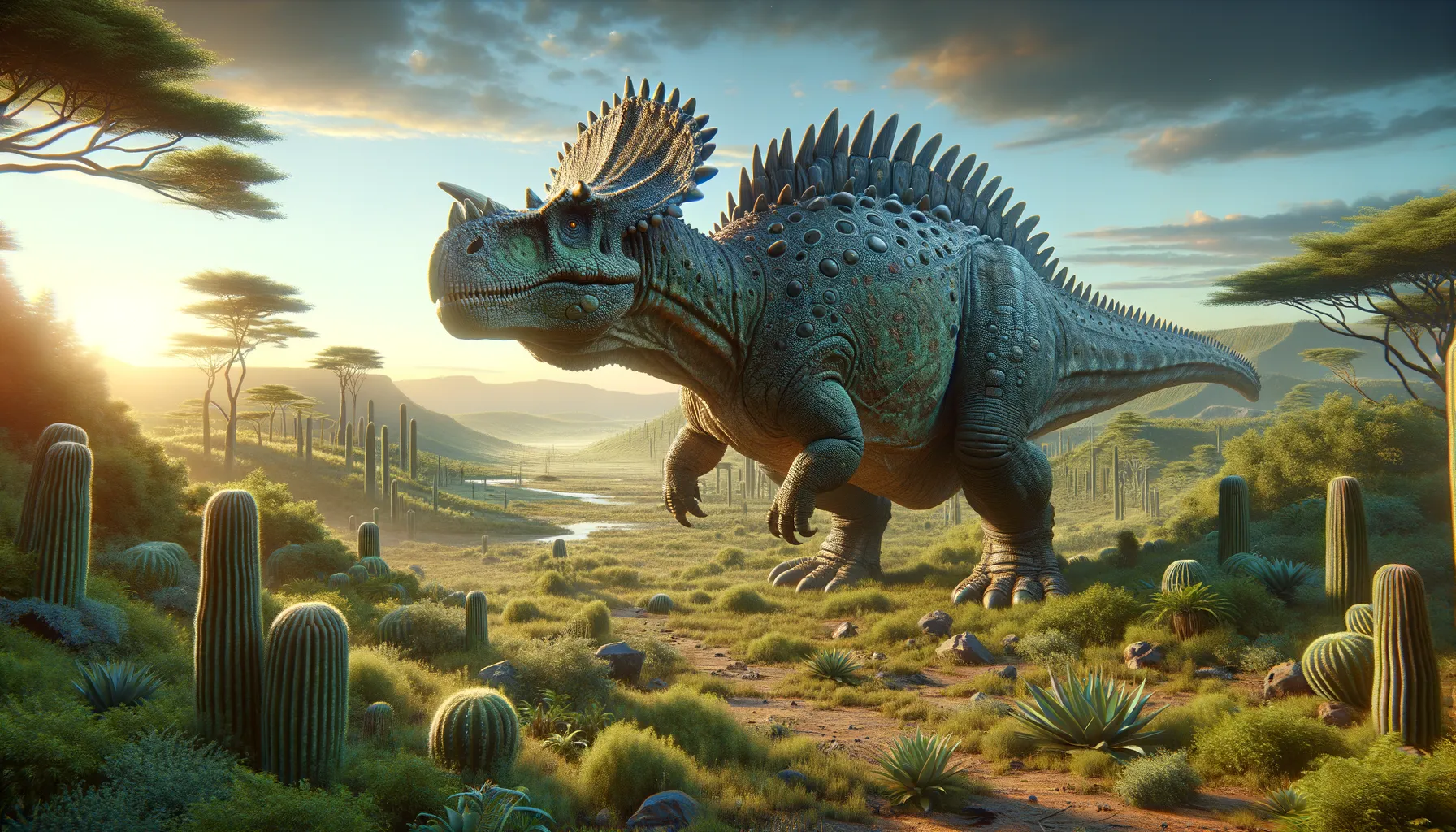
Hylosaurus
Armored guardian of the ancient world.
Period
Cretaceous
Length
Approximately 20 feet long.
Height
Around 4.5 feet tall at the shoulders.
Weight
Roughly 5,000 pounds.
Hylosaurus was a heavily built, armored dinosaur that roamed the earth during the early Cretaceous period. It belonged to the group known as ankylosaurs, which were known for their distinctive bony plates and defensive features. This dinosaur was herbivorous, feeding on low-lying vegetation, and its stout body provided protection against predators. Hylosaurus serves as an important link in understanding the evolution of armoured dinosaurs.
Diet
Hylosaurus was a herbivore, feeding primarily on ferns and low-growing plants. Its diet consisted of tough, fibrous vegetation, which it could easily grind with its strong jaws.
Hunting
As a herbivore, Hylosaurus did not hunt for meat. Its primary focus was foraging for plant matter, utilizing its keen sense of smell to locate food sources.
Environmental challenges
Hylosaurus faced challenges such as changing climates and vegetation patterns. These shifts affected the availability of its preferred food sources. Competition with other herbivores posed a challenge for food resources. Predators also loomed as a significant threat, necessitating defensive adaptations.
Speed
Its movements were likely slow due to its size and armor.
Lifespan
Estimated to live around 30 years.
First discovery
Discovered in 1832 by Gideon Mantell.
Fun Facts
- Hylosaurus was one of the first dinosaurs ever discovered and was named in 1833 by the famous paleontologist Gideon Mantell.
- The name 'Hylosaurus' means 'woodland lizard', a nod to the forests it likely roamed during the Early Cretaceous period.
- It was an armored dinosaur, part of the ankylosaur family, known for their heavy body armor and spikes.
- Although it was heavily armored, Hylosaurus was not very large, reaching lengths of about 16 feet (5 meters).
- Fossils of Hylosaurus have primarily been found in southern England, suggesting it lived in that region around 135 million years ago.
- Hylosaurus's body was covered in bony plates and spikes, which likely helped protect it from predators.
- Despite its armor-like body, Hylosaurus was a plant eater, thriving on the lush vegetation of its time.
Growth and Development
Young Hylosaurus were smaller and likely more vulnerable to predators. As they matured, their bony plates developed further, offering better protection. Growth would have required a substantial intake of vegetation to sustain their massive bodies.
Habitat
Hylosaurus lived in regions with abundant low-lying vegetation. Its habitat included forests and open plains, offering plenty of plant life to sustain its diet. The terrain also allowed for its slow-moving gait as it foraged.
Interaction with other species
Hylosaurus coexisted with various other herbivorous and carnivorous dinosaurs. Its interactions were mostly focused on avoiding predation and foraging in shared territories. Defensive armor enabled it to deter potential threats from predators.
Natural lifespan
Hylosaurus could naturally live up to around 30 years.
Reproduction
Hylosaurus reproduced by laying eggs, like most dinosaurs. It's possible that nests were constructed in secluded areas to protect the eggs from predators. Hatchlings were likely cared for to some extent until they developed sufficient armor.
Social behaviour
Hylosaurus may have lived in small groups or alone, depending on food availability. Social interactions were probably limited, focusing on mating and raising young. The species exhibited defensive characteristics rather than aggressive social behaviours.
Fossil locations
Fossils of Hylosaurus have been discovered in southern England. These findings provide valuable insights into the geographic distribution of ankylosaurs. Fossils usually include armor plates and skeletal fragments, aiding in research.
